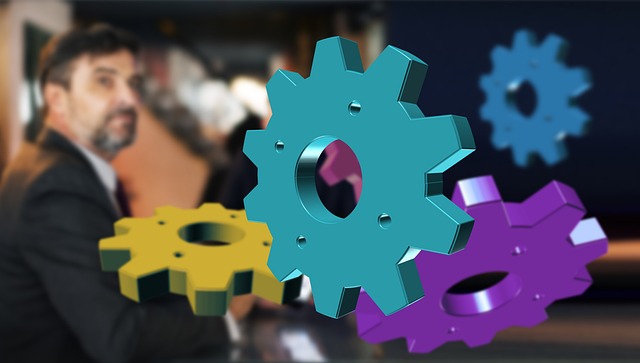
Programming Language Trends What Developers Should Learn in 2025
The technology landscape evolves at a rapid pace, and the tools that developers choose shape the way software is built, delivered, and maintained. In 2025, the role of the programming language extends beyond a mere syntax choice; it becomes a strategic decision that influences productivity, security, scalability, and career prospects. This article explores the current trends that are driving language adoption, highlights the most promising options for developers, and offers guidance on how to decide which programming language to master next.
Why Language Choice Matters in 2025
Every programming language is a blend of syntax, semantics, libraries, and tooling. A language that excels in one domain may perform poorly in another. In 2025, several factors make language selection more consequential than ever:
- Cloud‑Native Development: Microservices, containers, and serverless architectures demand languages that can be compiled to efficient binaries and run with minimal overhead.
- AI & Machine Learning: The explosion of data science workloads relies on languages that offer seamless integration with GPU acceleration, tensor libraries, and rapid prototyping.
- Security by Design: Modern regulatory environments require code that is safe by default. Languages that enforce strict typing and memory safety are increasingly preferred.
- Developer Experience: Productivity gains come from expressive syntax, robust tooling, and fast compilation or interpretation cycles.
- Community & Ecosystem: An active ecosystem ensures that libraries, frameworks, and support communities are available, which reduces time to market.
Emerging Trends in Programming Languages
Several macro‑trends are reshaping the language ecosystem:
- Systems‑Level Safety: There is a growing demand for languages that eliminate null pointer dereferences, data races, and buffer overflows at compile time.
- Cross‑Platform Consistency: Developers seek tools that allow writing once and deploying across web, mobile, desktop, and embedded devices.
- Concurrency & Parallelism: With multi‑core processors becoming the norm, languages that expose concurrency primitives without sacrificing safety are in high demand.
- Interoperability: The ability to call into existing libraries written in C, C++, or Python without extensive bridging code is a competitive advantage.
- Open Source Momentum: Open‑source licensing and community governance foster rapid iteration and adoption.
Top Programming Languages to Learn in 2025
Below is a curated list of programming languages that are shaping the industry in 2025. Each entry includes a brief rationale, key strengths, and typical use cases.
-
Rust
Rust’s ownership model guarantees memory safety without a garbage collector, making it ideal for high‑performance systems. Its growing ecosystem supports web assembly, embedded development, and backend services.
-
Go (Golang)
Go remains a staple for cloud infrastructure, microservices, and DevOps tooling. Its simple concurrency model, fast compilation, and excellent standard library keep it relevant.
-
Kotlin
Kotlin’s interoperability with Java, combined with concise syntax, makes it the language of choice for Android development and server‑side Kotlin Multiplatform projects.
-
TypeScript
As JavaScript matures, TypeScript adds static typing, tooling, and improved refactoring capabilities, solidifying its position in web and full‑stack development.
-
Python
Python’s dominance in data science, AI, and rapid prototyping is reinforced by robust libraries such as TensorFlow, PyTorch, and Pandas.
-
Swift
Swift’s safety features and performance make it the primary language for iOS and macOS apps, while Swift for Server and SwiftUI extend its reach to backend and cross‑platform UI development.
-
Dart (with Flutter)
Dart powers Flutter, enabling high‑performance, natively compiled applications across mobile, web, and desktop with a single codebase.
-
Julia
Julia’s JIT compilation and mathematical syntax provide a high‑level experience for scientific computing and numerical workloads.
Choosing the Right Language for Your Career Path
Different career trajectories emphasize different skills. Consider the following scenarios:
-
Enterprise Backend Engineer
Focus on Go for microservices, Java/Kotlin for legacy systems, and Rust for performance‑critical components.
-
Full‑Stack Web Developer
Master TypeScript with modern frameworks (React, Vue, Angular) on the front end, and Node.js or Deno on the backend. Adding Rust for compute‑heavy API endpoints can enhance performance.
-
Data Scientist / AI Engineer
Python remains essential, but familiarity with Julia can provide speedups in heavy numerical workloads. Understanding Rust can help with low‑level optimizations.
-
Mobile App Developer
Swift for iOS, Kotlin for Android, and Dart/Flutter for cross‑platform solutions give a broad skill set.
-
Embedded Systems Engineer
Rust’s safety guarantees and C++17/20 features make them top choices for firmware and real‑time systems.
Learning Resources and Pathways
Adopting a new programming language can be overwhelming. The following resources provide structured learning paths and community support:
-
Official Documentation
All major languages publish comprehensive guides, tutorials, and API references. For instance, the Rust Book, Go Tour, and Kotlin Documentation are excellent starting points.
-
Interactive Platforms
LeetCode, Exercism, and HackerRank offer language‑specific challenges that reinforce concepts through practice.
-
Open‑Source Projects
Contributing to mature projects exposes you to real‑world codebases and peer reviews. Rust’s ecosystem includes frameworks like Rocket and Actix, while Go hosts projects like Docker and Kubernetes.
-
Community Channels
Reddit, Stack Overflow, Discord, and language‑specific meetups provide real‑time assistance and networking opportunities.
-
Academic Courses
Online universities such as MIT OpenCourseWare and Coursera offer courses that delve into compiler design, concurrency, and systems programming for languages like Rust and Go.
Integrating New Languages Into Existing Workflows
Adopting a new programming language within a team or organization often requires careful planning:
-
Pilot Projects
Start with a small, non‑critical component to evaluate language fit and toolchain compatibility.
-
Tooling Compatibility
Ensure that continuous integration, code quality analysis, and deployment pipelines support the language’s build system.
-
Training Sessions
Organize workshops or pair‑programming sessions to transfer knowledge and address misconceptions.
-
Documentation Standards
Update internal wikis and code documentation to reflect new conventions and best practices.
-
Metrics & Feedback
Track performance, defect rates, and developer satisfaction to justify further investment.
Future Outlook: What to Expect Beyond 2025
While the landscape continues to shift, a few trajectories are likely to persist:
- Zero‑Cost Cloud Functions: Languages that compile to tiny binaries and integrate with serverless platforms will grow in popularity.
- AI‑Driven Development: Language features that support automatic code generation, inference, and model integration will become standard.
- Quantum‑Ready Languages: New dialects of existing languages will incorporate primitives for quantum algorithms, making quantum computing more accessible.
- Unified Type Systems: Languages that merge static and dynamic typing paradigms to provide flexibility without sacrificing safety.
Conclusion
The programming language that developers choose in 2025 will be shaped by a confluence of factors: the push for systems safety, the ubiquity of cloud native architectures, the demand for rapid AI development, and the need for cross‑platform consistency. Mastering languages such as Rust, Go, Kotlin, TypeScript, and Python positions developers at the forefront of these trends. By aligning language skills with career goals, engaging with community resources, and embracing incremental integration, professionals can stay relevant and deliver high‑quality software in a fast‑evolving tech ecosystem.


